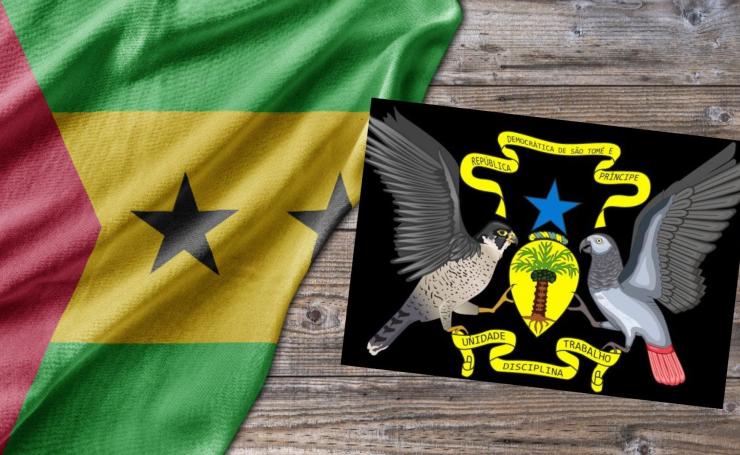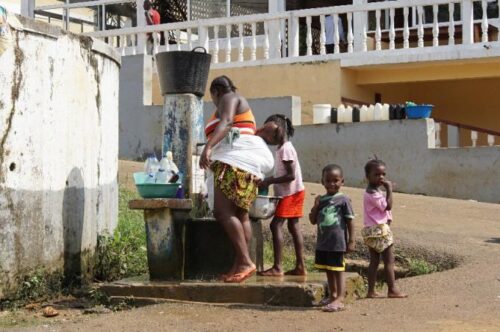São Tomé and Príncipe. A Lost Paradise.

São Tomé and Príncipe, a former Portuguese colony, is among the smallest independent states in the world.
It is composed of an archipelago located off the Atlantic coast of the African continent, opposite the Gulf of Guinea and located just north of the equatorial line. In addition to the two main islands of São Tomé and Príncipe, from which the Democratic Republic of São Tomé and Príncipe takes its name because of their size and importance, the archipelago is made up of about twenty islands, islets, atolls, and rocks. São Tomé has an area of 859 sq. km, while Príncipe is 142 sq. km. Both islands are located at a considerable distance from each other and from the coast. Of the two, Príncipe is the closest, 300 km from the mainland.

São Tomé and Príncipe map. GISGeography website
Its distance from the mainland, its wild and unspoiled nature, deserted beaches, the endemic species that populate the marine and terrestrial habitat and the enormous variety of flora and fauna, makes this archipelago a unique place, defined by visitors as a real Paradise. This uniqueness has also been recognized by UNESCO which has declared Príncipe a World Biosphere Reserve. 90% of this island is, in fact, covered by rainforest, but also by the volcanic peaks that descend to the coves of the northern coast. The tropical rainforest, in particular, ranked second in importance in a list of 75 African forests, originally constituted the vegetation of both islands with a gradual transition from
lowland forests to cloud forests.
The rainforests, very rich in edible plants, can still be found today in the southwestern area of both islands, although most of them are actually secondary forests that have taken the place of abandoned plantations. Furthermore, the numerous species of animals and plants, as well as amphibians, reptiles, insects, plants, and flowers of rare beauty, attract the interest of scholars and biologists who visit the archipelago from all over the world. They study the ecosystem and increase the understanding of its dynamics including that of anthropogenic pressures on the remaining rainforest areas, which threaten many species of plants, birds, reptiles, and small mammals. The environment, in fact, is perceived as a real resource to be protected and enhanced through harmonious development processes, such as sustainable tourism, in which it is possible to immerse oneself in a different, almost archaic world, where nature is preserved intact.

Pico Cao Grande, a volcanic peak on São Tomé. CC BY-SA 3.0/Philippe Bourachot
In recent years, in particular, there has been a great commitment on the part of citizens for the development of recovery projects of the ancient estates built by the Portuguese, the Rochas, and their consequential transformation into hospitality structures and support bases for projects of sustainable agriculture, with cultural centres or nursery schools within them. Also, through this initiative, in 2018 the country applied for FAO’s world agricultural heritage.
Even on the main island, the high volcanic mountains descend precipitously towards the sea, although both here and in Príncipe there are no signs of any type of volcanic activity relating to recent centuries. The Pico de São Tomé, the highest point on the main island, rises to 2024 m above sea level, while the Pico de Príncipe reaches 948 m. From the mountainous areas of both islands, there are numerous rivers and streams whose number is such that the natives usually say that there is one for each day. They descend swiftly and impetuously towards the coast in every direction.
The irregular topography of the islands, together with the presence of vast forests, favours a wide range of microclimates under the climatic profile, even if the basic climate is tropical.

São Tomé. Family on the public water pump in Santana. 123rf.com
The country is home to a population of 197,700 inhabitants of which 75,974 reside in the capital São Tomé, which is the most populous city as well as the capital of the district of Água Grande. In addition to Água Grande, there are 6 other districts, for a total of 7, five of which are located on the island of São Tomé and 1 on Príncipe.
Of these, Mé Zochi counts 49,852 inhabitants, Cantagalo 19,006, Caué 7,132, Lembá 15,891, Lobota 21,569 while the Príncipe
Autonomous Region has 8,277.
Since the 1990s, there has been an important exodus of the population from rural to urban areas and since 2019 the urban population of São Tomé and Príncipe amounts to 72.8% of the total population. This phenomenon, however, has had an inversely proportional impact on agriculture, whose farms, in recent years, have registered a decrease. Furthermore, this urbanization has followed a rather disordered path due especially to a lack of human and financial resources. In fact, the cities were not at all ready to welcome the new arrivals as they lacked basic facilities such as drinking water, electricity, roads, railways, and health services. Today, however, in terms of these services, 94% of the population in the country has access to drinking water, 42% to health services and 60% to electricity. (Open Photo: 123rf.com)
(F.R.)



